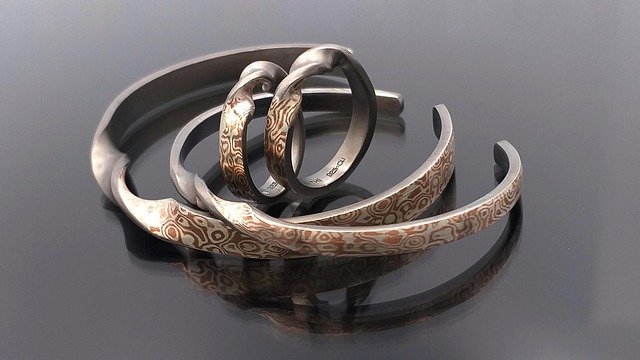Different Types of Earrings and How They Are Made
Earrings come in many shapes, sizes, and styles. This article explores how earrings are made from different materials, the common types people wear, and how designers create patterns and colors. Learn about the world of earrings and the ways they can be worn for everyday looks or special occasions.

Common Types of Earrings and Their Structures
Studs represent perhaps the most fundamental earring style, consisting of a decorative front attached to a thin post that passes through the earlobe and is secured by a backing. Hoop earrings, another classic design, form a circular or semi-circular shape that threads through the piercing. Dangle earrings feature components that hang below the earlobe, often incorporating movement elements. Drop earrings similarly hang downward but typically maintain a linear, stationary design. Chandelier earrings elaborate on the dangle concept with multiple tiers resembling their lighting namesake. Ear cuffs wrap around the outer ear cartilage, sometimes requiring no piercing at all. Huggie earrings fit snugly against the earlobe, while ear climbers extend upward along the ear’s edge. Each type creates a distinct visual effect and serves different fashion purposes.
Materials Used in Earring Production
Earrings incorporate an extensive range of materials, with precious metals being among the most traditional. Gold—available in yellow, white, rose, and other alloys—remains popular for its luster, malleability, and resistance to tarnishing. Sterling silver offers a more affordable precious metal option but requires anti-tarnish treatments for longevity. Platinum and titanium provide hypoallergenic alternatives for sensitive ears. Beyond metals, gemstones feature prominently in earring design, from diamonds, rubies, and sapphires to semi-precious stones like amethyst, turquoise, and opal. Contemporary earrings also employ materials such as acrylic, wood, glass, ceramic, and various polymers. Natural elements including feathers, shells, and bone appear in both traditional cultural jewelry and modern bohemian styles. The choice of materials significantly influences not only the appearance but also the weight, durability, and wearing comfort of the finished piece.
How Earrings Are Made: Manufacturing Techniques
The creation of earrings employs various manufacturing techniques depending on the design complexity and production scale. Traditional handcrafting begins with raw materials being formed through processes like wire wrapping, where artisans manipulate metal wire into intricate shapes, or metalsmithing, which involves hammering, soldering, and polishing metals. Lost-wax casting—an ancient technique still widely used—begins with creating a wax model of the design, which is then encased in a heat-resistant material. When heated, the wax melts away, leaving a mold into which molten metal is poured. For mass production, stamping machines cut earring components from metal sheets, while die-casting injects molten metal into reusable molds. Computer-aided design (CAD) and 3D printing have revolutionized contemporary jewelry making, allowing designers to create complex structures with unprecedented precision. Final stages typically include stone setting, polishing, plating (for non-precious metals), and assembly of components.
Popular Earring Styles Across Cultures
Earring styles vary dramatically across cultural contexts, reflecting historical traditions and social significance. In Indian culture, jhumkas (bell-shaped danglers) and chandbali (crescent-shaped) earrings remain staples in traditional attire, often featuring intricate filigree work. East Asian cultures have historically favored jade hoops and pendants, while Native American silversmithing traditions produced distinctive southwestern designs. West African cultures developed elaborate gold and brass earrings, including wide disk designs that stretched earlobes. European jewelry traditions evolved from Byzantine disk earrings to Victorian-era sentimental designs featuring miniature portraits or hair art. Contemporary global fashion continually recycles and reimagines these cultural styles, sometimes raising questions about appropriation versus appreciation. Modern trends often blend cultural influences while introducing new materials and production techniques, creating hybrid styles that reflect our interconnected world.
Designer Earrings and Signature Techniques
Designer earrings distinguish themselves through innovative designs, exceptional craftsmanship, and recognizable aesthetic signatures. Established jewelry houses like Tiffany & Co. emphasize precision and consistency, while independent designers often showcase experimental techniques and unusual material combinations. Some designers have become known for specific techniques: JAR (Joel Arthur Rosenthal) revolutionized pavé setting with microscopic attention to stone placement; Calder created kinetic mobile earrings that prioritized form over precious materials; Paloma Picasso introduced bold geometric designs for Tiffany. Contemporary designers like Anabela Chan incorporate lab-grown gemstones with traditional materials, while others focus on sustainability through recycled metals and ethically sourced components. The designer earring market spans from haute joaillerie pieces with rare gemstones and labor-intensive handcrafting to more accessible designer-branded collections that maintain distinctive aesthetics at different price points.
Innovations in Earring Manufacturing
Recent technological advances have transformed earring production methods, creating new possibilities for design and accessibility. Computer-assisted design software allows for previously impossible precision and complexity, while 3D printing enables rapid prototyping and even direct metal printing. Laser cutting provides exceptional detail in sheet metal designs. Advanced metalworking techniques like electroforming—which deposits metal onto a conductive model through an electrochemical process—create lightweight yet visually substantial pieces. Developments in materials science have introduced memory metals that return to their original shape after bending, and hypoallergenic coatings that make more metals wearable for sensitive individuals. Sustainable innovations include bio-resins derived from plant materials rather than petroleum, recycled metals refined from electronic waste, and lab-grown gemstones that mimic the optical properties of their natural counterparts without the environmental impact of mining. These manufacturing advances continue to expand what’s possible in earring design while addressing growing consumer interest in sustainability.
Earrings remain among the most versatile and expressive jewelry forms, with designs ranging from minimalist everyday pieces to dramatic statement accessories. Understanding the variety of types, materials, and manufacturing processes illuminates the craftsmanship behind these small but significant adornments. As production techniques continue to evolve alongside fashion trends, earrings will undoubtedly continue their millennia-long tradition of personal expression and cultural significance.




